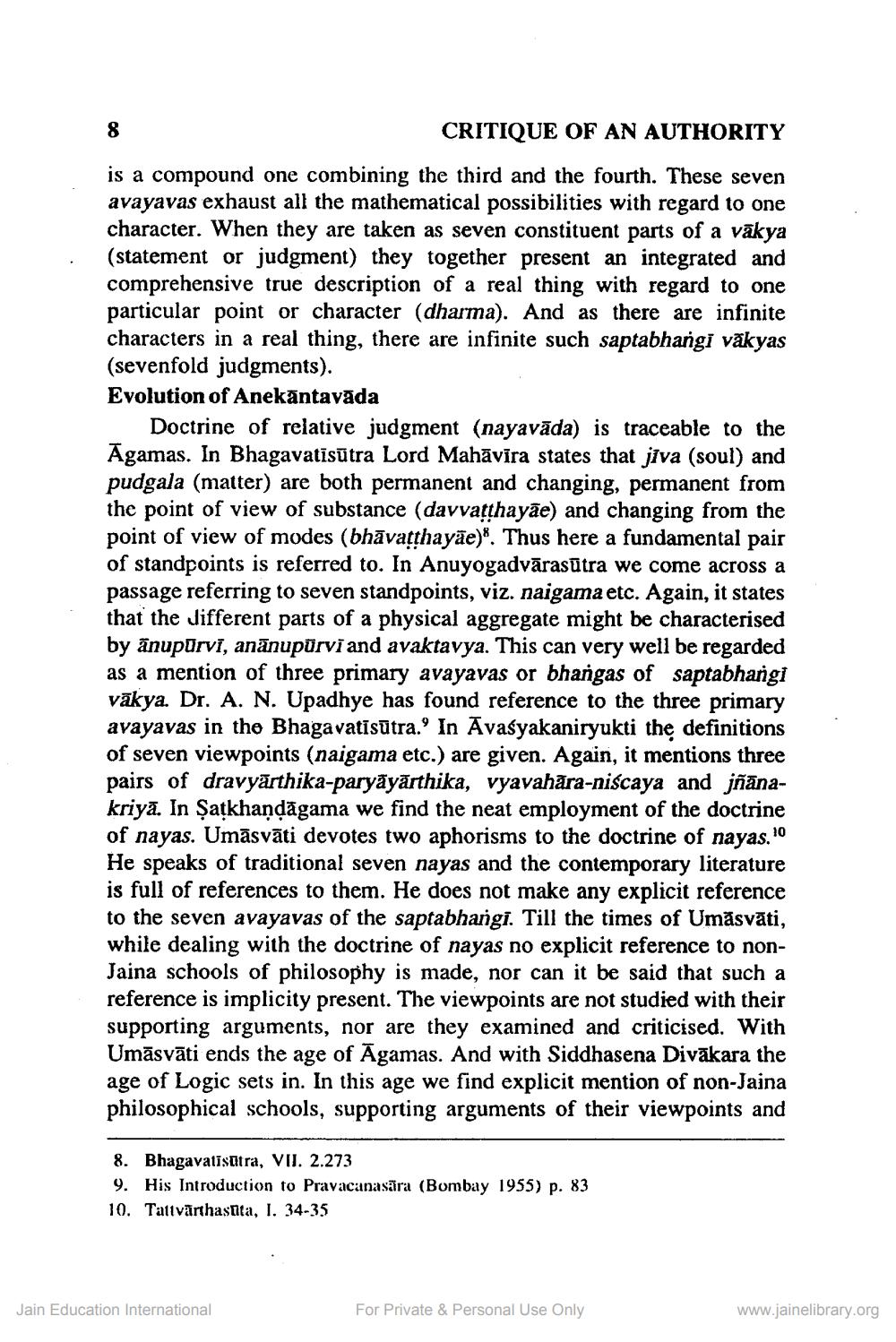Book Title: Aptamimansa Critique of an Authority Bhasya Author(s): Samantbhadracharya, Akalankadev, Nagin J Shah Publisher: Jagruti Dilip Sheth Dr View full book textPage 9
________________ CRITIQUE OF AN AUTHORITY is a compound one combining the third and the fourth. These seven avayavas exhaust all the mathematical possibilities with regard to one character. When they are taken as seven constituent parts of a vākya (statement or judgment) they together present an integrated and comprehensive true description of a real thing with regard to one particular point or character (dharma). And as there are infinite characters in a real thing, there are infinite such saptabhangi vākyas (sevenfold judgments). Evolution of Anekāntavāda Doctrine of relative judgment (nayavāda) is traceable to the Agamas. In Bhagavatisūtra Lord Mahāvīra states that jiva (soul) and pudgala (matter) are both permanent and changing, permanent from the point of view of substance (davvatthayāe) and changing from the point of view of modes (bhāvatthayāe). Thus here a fundamental pair of standpoints is referred to. In Anuyogadvārasūtra we come across a passage referring to seven standpoints, viz. naigama etc. Again, it states that the Jifferent parts of a physical aggregate might be characterised by anupūrvi, anānupūrvi and avaktavya. This can very well be regarded as a mention of three primary avayavas or bhangas of saptabhangi vākya. Dr. A. N. Upadhye has found reference to the three primary avayavas in the Bhagavatīsūtra.' In Avaśyakaniryukti the definitions of seven viewpoints (naigama etc.) are given. Again, it mentions three pairs of dravyārthika-paryāyārthika, vyavahāra-niscaya and jñānakriyā. In Șatkhandāgama we find the neat employment of the doctrine of nayas. Umāsvāti devotes two aphorisms to the doctrine of nayas. O He speaks of traditional seven nayas and the contemporary literature is full of references to them. He does not make any explicit reference to the seven avayavas of the saptabhangi. Till the times of Umāsvāti, while dealing with the doctrine of nayas no explicit reference to nonJaina schools of philosophy is made, nor can it be said that such a reference is implicity present. The viewpoints are not studied with their supporting arguments, nor are they examined and criticised. With Umāsvāti ends the age of Āgamas. And with Siddhasena Divākara the age of Logic sets in. In this age we find explicit mention of non-Jaina philosophical schools, supporting arguments of their viewpoints and 8. Bhagavatīsatra, VII. 2.273 9. His Introduction to Pravacanasära (Bombay 1955) p. 83 10. Tattvärthashta, I. 34-35 Jain Education International For Private & Personal Use Only www.jainelibrary.orgPage Navigation
1 ... 7 8 9 10 11 12 13 14 15 16 17 18 19 20 21 22 23 24 25 26 27 28 29 30 31 32 33 34 35 36 37 38 39 40 41 42 43 44 45 46 47 48 49 50 51 52 53 54 55 56 57 58 59 60 61 62 63 64 65 66 67 68 69 70 71 72 73 74 75 76 77 78 79 80 81 82 83 84 85 86 87 88 89 90 91 92 ... 140
